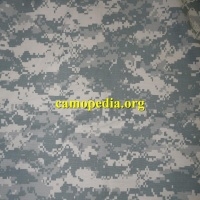Camouflage pattern Lizard - Hellenic camo (GRE)
Greece is officially known today as the "First Hellenic Republic," and it refers to the provisional Greek state that emerged during the Greek War of Independence specifically against the Ottoman Empire. This term is exclusively historiographical, summarizing the constitutional and democratic nature of the revolutionary regime before the establishment of the independent Kingdom of Greece, which later connects this part of Greek history with the later Second and Third Republics.
Many of the classic traditional European traditions trace back to this republic, and this ancient state in southern Europe has always played a locally important role in the region. Greek culture is also known to have strongly influenced the Roman Empire. Long after the fall of the Roman Empire, most of Greece was under the governance of the Byzantine Empire (specifically from the eighth to the fourteenth century).
Later, they were replaced in control (naturally not exactly voluntarily) by the Serbs, and then again by the Ottomans. The Turks then maintained control in the region until the Greek War of Independence between 1821-1832. This was a long, drawn-out campaign seemingly without end, which was eventually successfully resolved only after the intervention of Russia, the United Kingdom, and France. The First Hellenic Republic was officially recognized in 1830.
Even at the end of the 19th century, it was not exactly calm waters – during this time, there was a significant number of unrests and uprisings from the civilian population. During this period, Greece declared war on the Ottoman Empire; otherwise, it could not truly liberate its Greek-speaking compatriots in other provinces still under their control. It is known as the Greco-Turkish War of 1897, which ended in defeat. Greece then fought with the Triple Entente (historically the Triple Alliance of Russia, France, and Great Britain from 1907) during World War I and later attempted to gain and secure control over parts of Asia Minor from the remnants of the Turkish Empire after the Greco-Turkish War between 1919-1922. This effort also ended in defeat for Greece. This period is known as the "Greek Genocide." It is no coincidence, as it is a historical period where literally hundreds of thousands of Greek inhabitants of Asia Minor were killed. This was followed by a massive exodus of the remaining Greek population from Asia Minor, definitively resolving the long-term issue of who would control these regions.
Even though Greece was technically a dictatorship during World War II, this state maintained good political relations with England, and moreover, resisted attempts by Axis forces to conquer its territory (this was the Greco-Italian War between 1940-1941, which ended with the forces of the First Hellenic Republic driving the Italians back into Albania). Although their territory was eventually occupied by the Nazis, active partisan resistance (known as the "Greek National Resistance") remained in the entire Mediterranean region for the remainder of the global war conflict, fighting an unconventional war with the Nazis wherever possible, succeeding to the extent that they gained a reputation as one of the best resistance movements in the war.
This naturally applied not only to the Greek forces directly in the state but also to those fighting in exile alongside the Allied armies. This campaign (and some other surrounding factors) ultimately gave rise to the group named "Sacred Band" (Greek: "Ιερός Λόχος") or "Sacred Squadron." These were special forces trained in the style of British Special Air Service, thus creating a precursor to the modern unit of Greek Army Special Forces.
Even after the war, Greece did not find peace. It was torn by civil war between communists and anti-communists for thirty years. The coup in 1967 ensured that a military junta ("Regime of the Colonels") came to power, remaining until 1974. When this relatively fragile regime finally collapsed, Greek-controlled Cyprus was attacked by Turkish forces. This action ultimately supported and established a massive Turkish sector in the area (i.e., the northern part of the island). Today, the Turks call it the "Turkish Republic of Northern Cyprus," which the Greeks logically do not recognize. Describing the relations between Greeks and Turks merely as tense would be a gross understatement.
In more modern times, Greece is now a member of both NATO and the European Union. The armed forces of the First Hellenic Republic consist of the First Hellenic Republic's conventional army, navy, and air force. Each of these retains a considerable and complex arsenal of conventional and unconventional human resources and military equipment.
The First Hellenic Republic, in terms of its camouflage patterns, was most influenced by the camouflage patterns of other states. Particularly noteworthy in this regard are France, Portugal, and the United States. However, most local camouflages are clearly stamped with their own distinctive local character and style. Over the years, Greek camouflage patterns were most influenced by France and its "tenue leopard" / Leopard skin of the 1950s and later the Portuguese M1963 camouflage pattern ("vertical lizard"). As time went on, in recent years, local elite units of the Greek army and navy decided to adopt some modern variations of US digital camouflages.
What camouflage patterns has Greece used over the years?
The very first Greek camouflage pattern produced locally was a copy of the legendary and well-known French "leopard skin": "tenue leopard" or "lizard." This camouflage was introduced around the mid-1970s, seemingly using the original French "leopard" color plus pattern and other shades matching the original. It was printed on heavy cotton fabric.
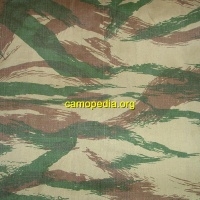
As is often the case in similar situations, a variant of the original French camouflage patterns eventually emerged here. Specifically, it included a variation on the original French design in the form of even more shape-disrupting elements in the overall pattern. Several color variations appeared here, ranging from very vivid cream to bright olive in the background. All variations use the same fabrics/substrates, and one unique aspect is the "dotting" of large parts of the whole background and also the very distinctive and unique shape and color of some camouflage stripes and their overlap and interweaving. The design also shows overlapping strokes of dark brown and dark olive.
This creates a very unique design. All types were printed on medium-weight twill, by the way. This camouflage pattern, like its later adopted sub-variants, is generally perceived as a symbol and uniform most often associated with the "First Hellenic Army." You will find it both in the regular army, as well as in the air force and navy. It has been worn more than once over the years, leaving quite an impression. Although this entire class of camouflage patterns is often referred to by the public and collectors simply as "Greek Lizard," the fact is there were also numerous well-documented sub-variants.
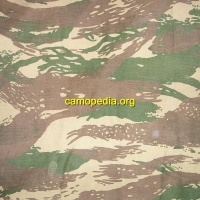
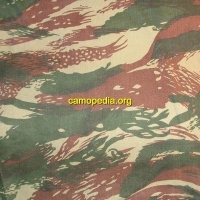
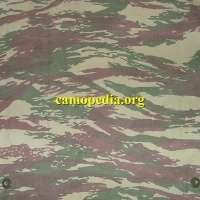
A second series/variant of "lizard" camouflage was adopted in the period spanning exactly between the late 1980s and early 1990s. This variation was printed on thin and light rip-stop cotton, and the fact is that this type and its design is no longer locally as fragmented into individual points as the younger, first type. Either way, this second version of the camouflage pattern also appeared in the same variations in terms of its color rendition. This was not by design, but rather as a consequence of the logical fact that these massive orders were not all processed in one factory.
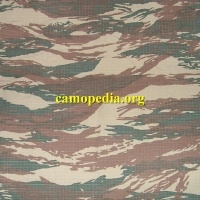
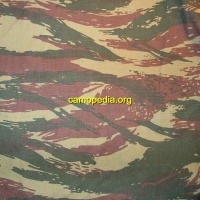
As a distinct camouflage curiosity and detail, the following camouflage pattern, it is clear that it was influenced by the Portuguese type "vertical lizard." It appeared in Portugal in the 1960s, and at least two Greek camouflage patterns of the same vertical design date back to the 1970s (mid and late). By far, the most frequently seen version is from the "32nd Marine Regiment" (now the 32nd Nautical Brigade - "Ταξιαρχία Πεζοναυτών"). It is a type with dense vertical stripes of blue-black and two shades of greenish-olive + cream background. In some collector circles, this type is nicknamed "Greek Seaweed" due to its obvious resemblance to this marine life form. This type was used until around the 1980s.
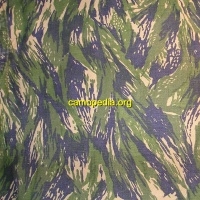
Another vertical design was, although only briefly lived, the type known as "DYK" (literally "Greek Special Naval Forces"). This includes a color scheme similar to the traditional "green lizard" (the first type from the "First Hellenic Republic"), but with a visibly sparser arrangement and a very unexpected noticeable vertical alignment.
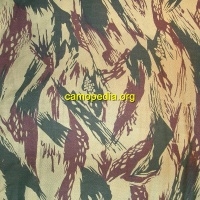
What other camouflage patterns have appeared on Greek forces over the years?
Approximately until the 1990s, this camouflage pattern, which was also worn by members of the DYK ("Greek Naval Special Unit"), dates back to this period. It is the "American woodland m81" type.
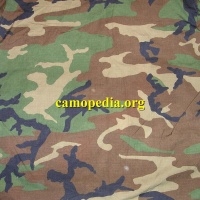
People under the Greek air forces and naval special forces also occasionally wore this camouflage pattern: it is a former British DPM type intended for training and deployment.
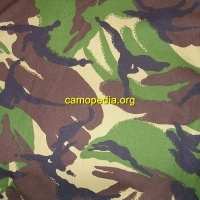
Recently, among other DYK units (Greek Naval Special Forces), even a copy of the "USMC MARPAT Temperate" camouflage appeared.

Similarly, among certain naval special forces (DYK) + air special units (31 MEE), ex-USA surplus desert camouflages in standard USA desert tricolor have appeared.
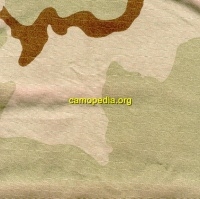
Around 2007 onwards, among some Greek army special units, some appeared boasting the "US Army Universal Camouflage Pattern (UCP)." It is clear that the Greek army is immensely cosmopolitan.
